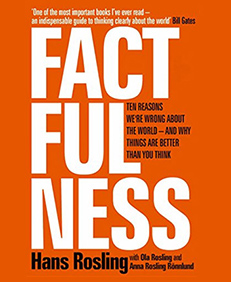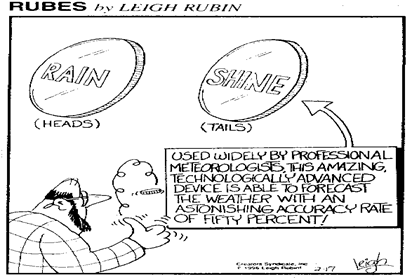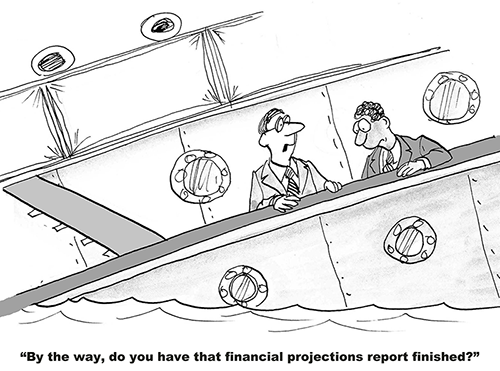Rosling lived his message of a fact-based approach in all situations, sometimes even ones threatening his own life. Like the time, when Rosling was surrounded by a suspicious, machete-waving mob in an African country, where he had gone to find a solution for frequent instances of paralysis in the population. Not knowing the local language and completely defenseless, Rosling turned to his favourite weapon – facts. Producing pictures of paralyzed patients, Rosling used sign language to plead his case that he wanted to find a cure. Inspired by the ring of sincerity in his plea, a woman in the group appealed for peace and rolled up her sleeve to offer a blood sample. Others followed. Soon enough, Rosling identified the real culprit – poorly cooked cassava root that had cyanide like residue leading to paralysis. Rosling’s campaign eliminated cassava induced paralysis
Factfulness lists 10 Instincts or mindsets that prevent a fact-based world view. In each, there is a sales parallel we can draw. Here are the 10 instincts that blind us to facts:
- The Gap Instinct – Extremities don’t define the world. Yet the easy option is to instinctually divide up everything we see into two neat opposing categories. Example – “us’ Vs “them”. Or another Rosling favourite – “developing” and “developed”. The problem with the gap instinct is that it focuses on extremities and ignores the middle categories
Possible Sales Example – Seeing sales performance in the binary of quotas reached or not reached. In forecasting and fixing targets, we should in fact be mindful about the gap instinct and look for the shades of grey in between and the factors behind them. That contributes to a richer understanding of the sales force and its various constraints and strengths
- The Straight-Line Instinct – Assuming past to be a sure predictor of the future and extrapolating past trends into the future without considering the other new variables that may impact these trends
Possible Sales Example – The temptation to do ‘base plus percentage’ forecasting is irresistible in sales. Ignoring other facts that could influence sales, vitiates the projected numbers
- The Negativity Instinct – We are presented a gift horse. And what we do? Of course, look it in the mouth! This is an instinct that expects bad news even if positive trends are evident
Possible Sales Example – Economy is slowing says the pink press and most businesses are cautious about their expectations. We buy into this negativity and forecast lower numbers even when our products are poised do well because they are in good demand
- The Size Instinct – Allowing ourselves to be seduced by big numbers seen without a context, and ending up with erroneous conclusions
Possible Sales Example – Failing to look for the facts behind big numbers. Example: The sales of a peer company have grown 20 percent faster than ours, so we conclude our team is inadequate, when in truth, their sales would have been 10 percent less than ours, without a large a one-time order landed by them through sheer luck
- The Fear Instinct – Ignoring the real risk, focussing exclusively on the perceived risk that feeds our fears
Possible Sales Example – Market uncertainties may be worrying us when in fact the sales competencies of our team may be getting rusty. Business plans based on such fears, are apt to go awry
- The Generalization Instinct – Jumping to conclusions using averages and generalizations
Possible Sales Example – Two products in a category fail to fire and the sales team decides to junk the entire category in its annual business plans. A competitor with a more fact-based approach identifies the profitable ones in the category and moves into the vacuum to make a killing
- The Destiny Instinct – Becoming impervious to slow, progressive changes only to be overwhelmed later, not unlike the slow boiled frog in hot water
Possible Sales Example – Week on week small declines in sales volumes are ignored till they all add up to a gap that can’t be bridged and the forecast goes out of the window
- The Single Perspective Instinct – Simple solutions may actually be simplistic solutions, especially when complexities underlying a problem are ignored
Possible Sales Example – If forecasts are not met, withdraw or hike the incentives
- The Blame Instinct – This can operate in two ways – Looking for villains when something goes wrong and for heroes if we are doing exceptionally well. Sports history is replete with examples of blame instinct
Possible Sales Example – Fire or promote the territory managers solely basis failure or success in reaching quota numbers
- The Urgency Instinct – We’ve all heard it crisis situations and we still do – “Do something, anything!” Actions thoughtlessly taken to urgently ‘fix’ issues never produce happy results
Possible Sales Example – After 3 consecutive months of big gaps between forecasted and actual sales, we decide to scale down targets, taking them to be unachievable. In reality, seasonal factors may have led to the lack luster show
This New Year before you plan your sales for 2019, pick up Hans Rosling’s book. Treat yourself to a helping of Factfulness














